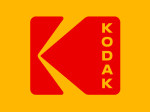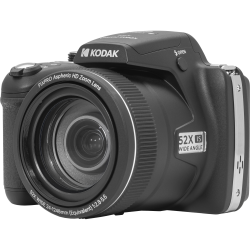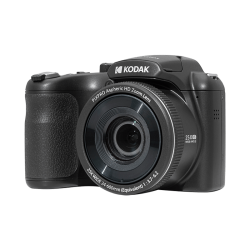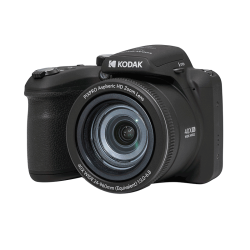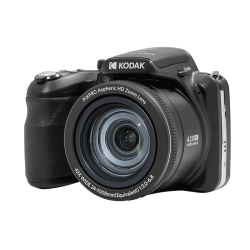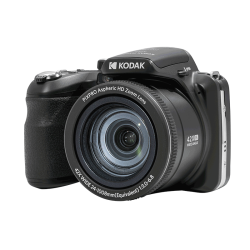Zoom lenses - why quality and range make all the difference

A camera's zoom is a game-changer whether you're a pro photographer or a hobbyist. It lets you shoot up close without having to move an inch. For example, if you're up a mountain and want to snap an animal that's far away, you can use your camera's zoom.
Obviously, the power and type of zoom varies from one camera to another. Kodak's bridge cameras have the most powerful zoom lenses. These models are ideal for hardened enthusiasts, hobbyists and professionals who want to perfect their technique or invest in a camera tailored to their needs.
Let's take a look at how zoom works and what it's used for. We'll also look at the bridge cameras we recommend if you're after a powerful zoom lens.
What does a zoom lens do?
Anyone who's taken a photo has probably wanted to snap an object that's far away. Or you may have wanted to shoot something close, but in the minutest detail. A zoom allows you to vary your viewpoints by going from the farthest to the closest point: you can create close-ups or panoramic views.
This means that your zoom can be used in a whole host of situations. You can use it to capture a distant subject, for example, an architectural detail or an animal you can't approach. You can also use it for close-ups such as a detailed shot of a flower. A zoom's also handy when taking portraits or highlighting one or more subjects that are closely-packed.
What's the difference between optical zoom and digital zoom?
Nowadays, there are two types of zoom: digital zoom and optical zoom. It's important to know the difference because you'll get a different image definition depending on the one you use.
Digital zoom
Digital zoom is an "artificial magnification" of the photographed image. The digital camera's processor performs this magnification. A digital zoom works in the same way as if you zoom in on photo that you're looking at on a device. This type of zoom takes part of the image and enlarges it to the size you're after. In other words, the digital zoom refers to the virtual magnification of an image. Professionals who use digital zoom tend to refer to it as 'cropping'.
So, even though you can find extremely powerful digital zoom lenses, the image definition won't be as good as that taken using optical zoom. A high-resolution digital camera will be able to zoom in without losing quality. However, if you zoom in too far for the size of the sensor, you'll end up with a blurry image.
Optical zoom
An optical zoom works mechanically. The focal length of the lens is narrowed down to the object you're shooting so that it occupies the entire surface of the sensor. As you adjust your settings, your camera lens will start to move. Optical zoom is used for providing magnification without any loss of image quality.
To understand how your optical zoom works, you need to know that when you activate the zoom you'll be changing the lens's focal length, i.e. you'll be tweaking the camera's optical system. The power of the zoom corresponds to its amplitude: the more powerful your zoom, the more amplitude you have, so you can choose long focal lengths, short focal lengths and more varied angles of view.
Bear in mind that a powerful zoom needs to be accompanied by a good stabiliser: without one, it could take you a long time to get a sharp, wobble-free image if you zoom in to the maximum.
Understanding fixed focal length and zoom
If you start to experiment with different photography techniques, you'll come across the notions of fixed focal length and zoom.
To take photographs, a camera uses a photographic lens (also known as an optic). It's this lens that reproduces the image captured by the sensor. There are two types of lenses: fixed focal length and zoom.
Unlike a zoom lens, a fixed focal length lens does not change its focal length. It will have a set value, for example, 18 mm or 300 mm. In practical terms, this means that the angle of view always remains the same: if you want a different angle you have to move in or out or use another lens. Zoom lenses, on the other hand, have variable focal lengths. These are often referred to as minimum and maximum focal lengths.
Both fixed and zoom lenses have their advantages. However, a fixed focal length is more restrictive: you have to move around to frame your subject or lug around several lenses, which are much bulkier than a single zoom lens with a variable focal length.
